Intel Unveils Lunar Lake Architecture: New P and E cores, Xe2-LPG Graphics, New NPU 4 Brings More AI Performance
by Gavin Bonshor on June 3, 2024 11:00 PM ESTIntel Lunar Lake: New E-Core, Skymont Takes Flight For Peak Efficiency
Intel also opts for their Skymont E-cores, which are designed more for efficiency while maintaining a solid level of performance at a lower power envelope.
The Skymont cores feature a significantly broader decode architecture, with a 9-wide decode stage that includes 50% more decode clusters than previous generations. This is supported by a larger micro-op queue, which now holds 96 entries compared to 64 in the previous Crestmont E-Cores.
Intel has improved the out-of-order execution engine by boosting the allocation width from 4 to 8 and the retire width from 8 to 16. The next-gen Skymont core is supposed to surpass Crestmont E-Cores with double the allocation and retire width in terms of its ability to commit and run out-of-order instructions, decreasing overall latency and minimizing stalling for data dependencies.
Queuing and buffering capabilities have also been improved within the Skymont E-Core. It features a deeper reorder buffer of 416 entries, up from the previous 256, while Intel claims the size of the physical register files (PRF) and INT, MEM, and Vectors have been made deeper, too.
Focusing on dispatch ports, Intel has opted for a similar approach to Crestmont. This includes 26 dispatch ports, 8 integer ALUs, 3 Jump Ports, and 3 for load operations per cycle. Regarding Vector performance, Skymont supports 4x128-bit FP and SIMD vectors, which doubles gigaflops/TOPs and reduces latency for floating-point operations.
Intel does provide some figures highlighting Skymont's power efficiency and performance when compared directly to the Low Power Island E-Cores included on the SoC tile on Meteor Lake. In this particular line chart, Intel increases single-threaded performance by 1.7X while consuming just one-third of the power relative to Meteor Lake's LP E-cores.
Looking at multi-threaded performance, Intel puts Skymont 2.9X faster at 1/3rd of the power requirements when compared to Meteor Lake and the LP E-cores. It's worth noting that the Skymont E-Core cluster on the compute tile has double the cores of the Meteor Lake LP E-Core cluster (4 vs. 2), so performance is expected to be higher overall.
Due to their low-powered nature for mobile devices such as notebooks, the Skymont E-cores are designed to be very flexible, with some leverage over previous E-Core architectures. Compared to Raptor Cove, Skymont offers 2% better integer and floating-point performance in single-threaded workloads, with a power and thermal envelope almost identical to Raptor Cove. This is in a more desktop-friendly environment, as Intel does depict the data with the Skymont cores on an LLC or a Ring Bus. This is E-Cores versus the previous gen of P-Cores, in which Intel is claiming a 2% lead.
Intel's Skymont E-cores represent the next leap in Intel's architectural development. According to Intel's disclosure, Skymont looks to be a marked improvement in multiple areas over the previous Crestmont E-Core, including decoding, execution, memory subsystems, and power efficiency. While Intel discloses them as E-Cores, the messaging surrounding Skymont is a little confusing.
The easiest way to decipher this is that they are similar to the two LP E-Cores within the Meteor Lake SoC tile, but with Lunar Lake, they are in a cluster of four built onto the compute tile. On Lunar Lake, they will be as efficient as the LP E-cores of old, but for desktop, they will be in a cluster on the chips Ring Bus, meaning they will likely be similar to the traditional E-cores we've seen before with Intel's 14th/13th/12th Gen Core families.


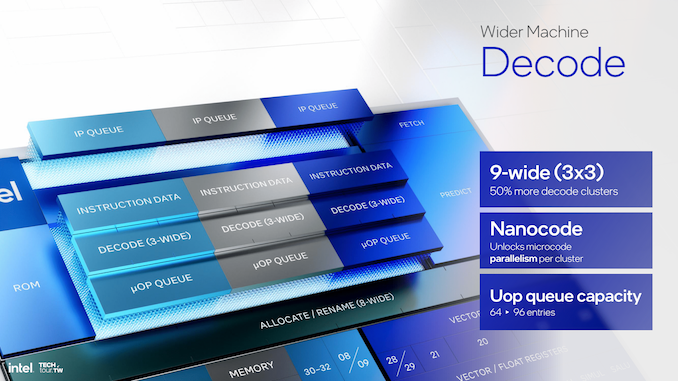
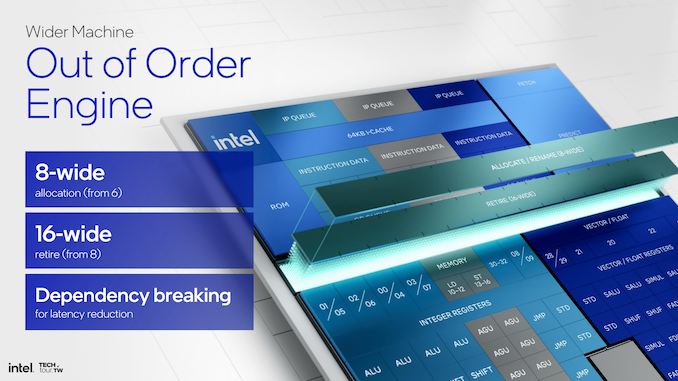
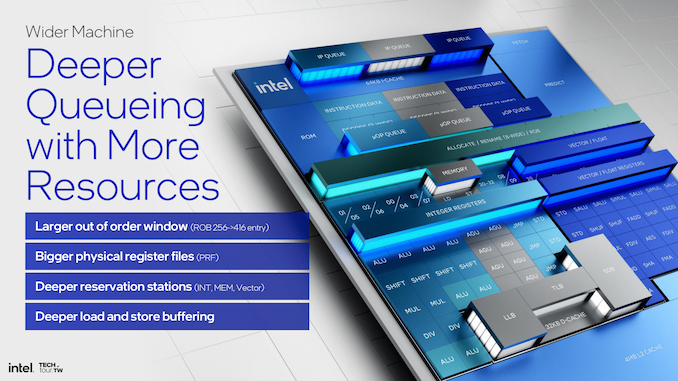


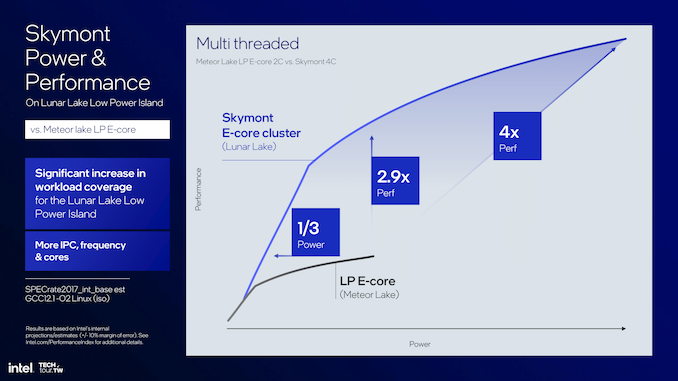
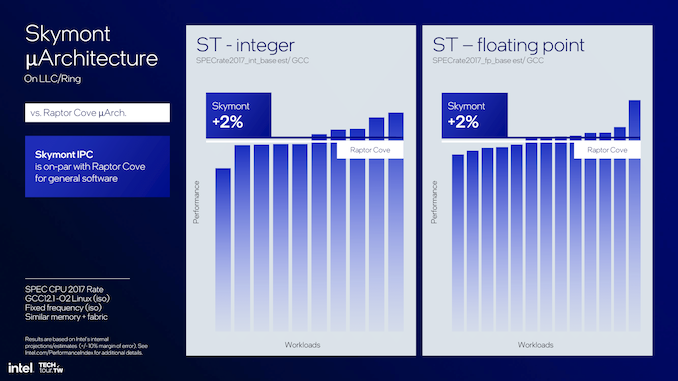
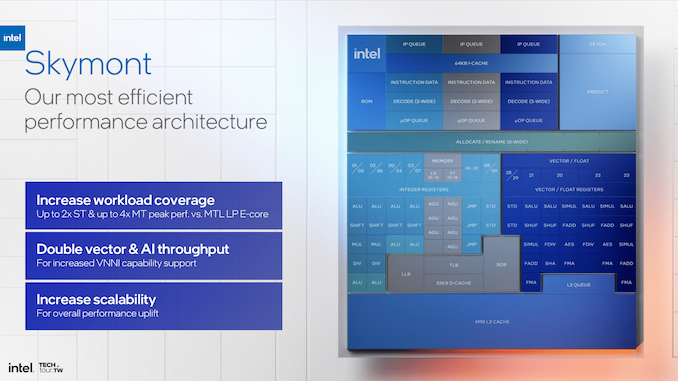








91 Comments
View All Comments
Bruzzone - Thursday, June 6, 2024 - link
Thanks BushLin, I also find all the engineering and end use perspectives interesting as a compliment resource specific market observations I triangulate for common perspective and some not so common perspectives from time to time.My full AMD workstation, desktop and mobile what's selling in the last 6 weeks report is now posted at Seeking Alpha.
I posted here in comment string and just look down comments to the pointer and the full report is easily downloadable. There is also a pointer within the downloadable report itself to the same Intel data last eight weeks.
https://seekingalpha.com/article/4697165-computex-...
Mike Bruzzone, Camp Marketing Reply
lmcd - Wednesday, June 12, 2024 - link
if you don't understand how inventory affects pricing then stick to reddit Replyballsystemlord - Wednesday, June 5, 2024 - link
In answer to your question, "It's worth the wait to Lunar and Arrow?"In terms of Intel's CPU/GPU performance, I doubt it.
In terms of power efficiency, they might have caught up. We'll have to wait for reviews. Only partially refreshing the screen should lead to a nice performance improvement and/or efficiency improvement of the GPU.
In terms of QoL improvements, it looks like Intel went all out for this new generation. In the following statements, I'm assuming that Intel's able to deliver. Having multiple TB4 ports is useful. Having TB4 with the ability to transfer files is also useful. So is better Wi-Fi. If anything, this might be *the* killer feature of the series. Likewise, VVC, assuming it's not badly licenced, should prove useful. I wonder if VVC is supported by their Quicksync encoder...
Don't misunderstand me, I appreciate what you've said above. But I really don't see this gen failing badly unless AMD/Qualcomm can equal them in terms of useful features. Reply
Bruzzone - Thursday, June 6, 2024 - link
Ballsystemlord,I also think Intel's on it way back to mobile efficiency. While Meteor is ramping, I perceive OEMs from channel data and enterprise IT especially Intel shops on 'applications utility' value, and validation, waiting for Lunar / Arrow and or Strix. Granite Ridge I see facing an AM5 saturation issue and there is sooo much Raphael and Vermeer in the channel to clear R9K price will likely be held up while Raptor/Alder and Raphael/Vermeer nose dive on channel liquidation for capital reclaim to buy new like q4 into first half 2025.
From the channel data AMD and Intel are dumping all over Snapdragon X whose launch is into a deflationary price cycle at least through q1 2025. Lots of downward price and margin pressure.
Me, I am looking for a new (used) laptop, more a desktop replacement than Office low power and AI does not matter to me currently. I was interested in a used Tiger Octa or Cezanne H_ with MXM GPU but waiting a wee bit more because laptop prices including gaming are in a nose dive.
Means I'll be able to move up to new 13th Raptor in overage supply condition or used Alder or Rembrandt H with minimally Ampere. AMD Cezanne and Rembrandt and 13th and 12th pricing just let go and it get's better into q4. See my Seeking Alpha report on supply, trade-in and sales trend pointed to above.
mb Reply
GeoffreyA - Thursday, June 6, 2024 - link
Though my computer is all right, I'd like to upgrade to Cezanne or Renoir, either 5600G or 4600G. (It will likely be the latter because of motherboard woes.) Here, the prices have been stuck for ages. Do you think they'll ever drop? Replyballsystemlord - Thursday, June 6, 2024 - link
GeoffreyA, I'm not involved with the markets like Mr. Bruzzone, but my recent experience with trying to get a GPU for 4 years in a row says, "Yes, prices will go back down." ReplyGeoffreyA - Friday, June 7, 2024 - link
Thanks. It's just puzzling because I don't understand the markets and economic side of things too well. Replylmcd - Wednesday, June 12, 2024 - link
5600G and 4600G are weird parts because they're dependent on AMD's mobile positioning. The latter (4600G) isn't being manufactured anymore to my knowledge -- Renoir is useless now to AMD because it was supplanted in mobile by the updated Mendocino platform, which likely will never be brought to desktop. I am not sure pricing on the 4600G will ever make sense.5600G is Cezanne, which is still being manufactured for 7x30 series (or was until recently).
However, at this point Cezanne is 7nm and easily binned, but there is no direct 5600G replacement yet as AMD did not launch a 7000 series G product. The 8000G series (just announced) should push 5600G into clearance pricing. Reply
GeoffreyA - Thursday, June 13, 2024 - link
Thanks. Good explanation. I'd go for the 5600G, but my motherboard, B450 Tomahawk, apparently has issues with this very CPU, despite there being BIOS support for quite some time. Online, people haven't had a solution, and MSI says nothing. Replymode_13h - Thursday, June 6, 2024 - link
Hey, where's the rest of the slide deck? There are definitely some slides I've seen elsewhere that aren't featured in the article. I'm used to this site posting the entire slides at the end. Reply